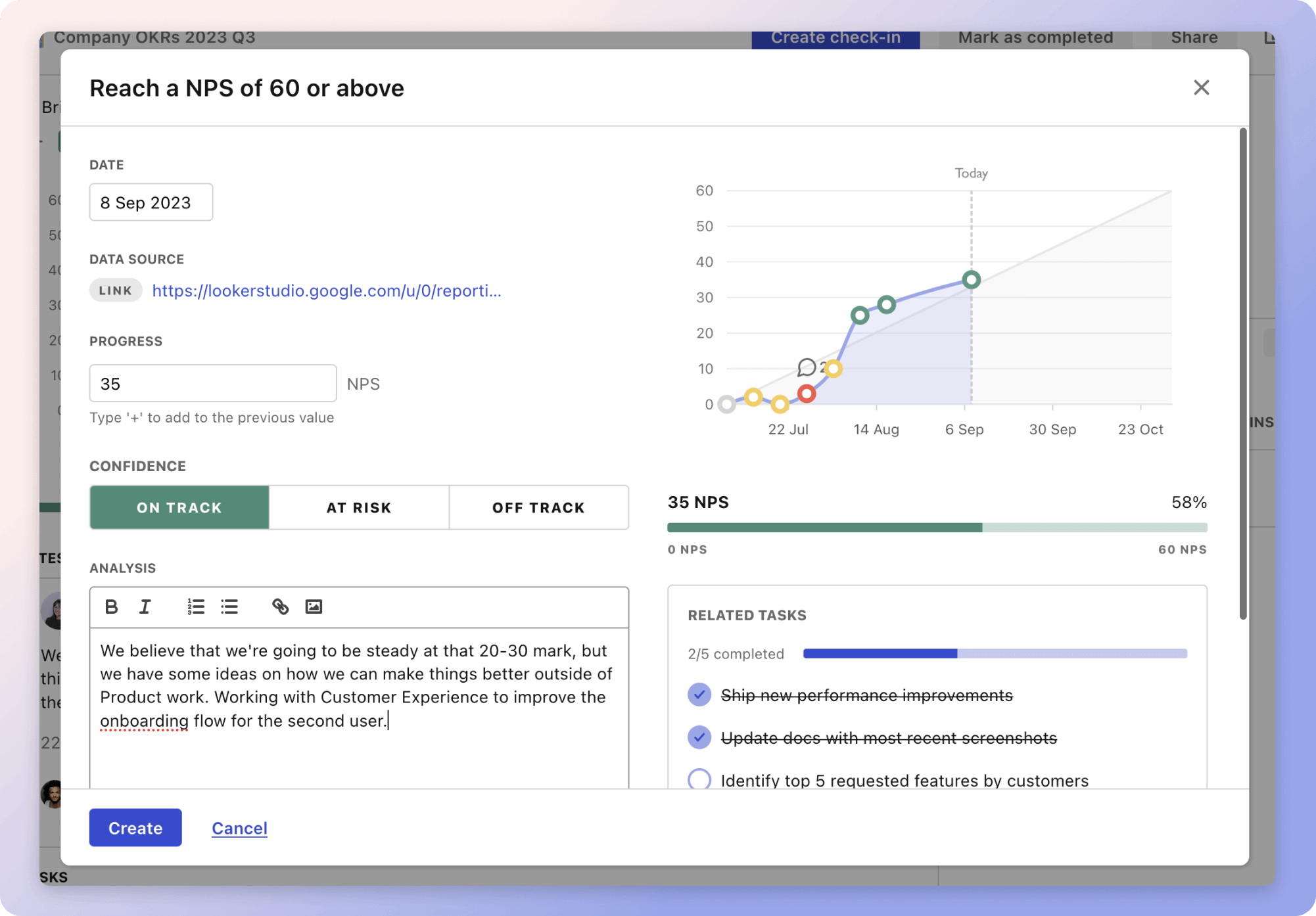What are Predictions Accuracy metrics? Crafting the perfect Predictions Accuracy metrics can feel overwhelming, particularly when you're juggling daily responsibilities. That's why we've put together a collection of examples to spark your inspiration.
Transfer these examples to your app of choice, or opt for Tability to help keep you on track.
Find Predictions Accuracy metrics with AI While we have some examples available, it's likely that you'll have specific scenarios that aren't covered here. You can use our free AI metrics generator below to generate your own strategies.
Examples of Predictions Accuracy metrics and KPIs 1. Accuracy of Predictions Measures how correctly the sourcing model predicts outcomes compared to actual results
What good looks like for this metric: Typically above 70%
Ideas to improve this metric Use more comprehensive datasets Incorporate machine learning algorithms Regularly update the model with new data Conduct extensive testing and validation Simplify model assumptions 2. Computational Efficiency Assesses the time and resources required to produce outputs
What good looks like for this metric: Execution time under 1-2 hours
Ideas to improve this metric Optimize algorithm complexity Utilise cloud computing resources Use efficient data structures Parallelize processing tasks Employ caching strategies 3. User Accessibility Evaluates how easily users can interact with the model to obtain necessary insights
What good looks like for this metric: Intuitive with minimal training required
Ideas to improve this metric Develop a user-friendly interface Provide comprehensive user manuals Conduct user training sessions Ensure responsive support Regularly gather user feedback 4. Integration Capability Measures how well the sourcing model integrates with other systems and data sources
What good looks like for this metric: Seamlessly integrates with existing systems
Ideas to improve this metric Adopt standard data exchange formats Ensure API functionalities Conduct system compatibility tests Facilitate flexible data imports Collaborate with IT teams 5. Return on Investment (ROI) Calculates the financial return generated by implementing the sourcing model
What good looks like for this metric: Positive ROI within one year
Ideas to improve this metric Analyse cost-benefit ratios Continuous optimisation for cost reduction Align model outputs with business goals Enhance decision-making accuracy Regularly track and report financial impacts
← →
1. Accuracy Proportion of overall correct predictions made by the system
What good looks like for this metric: Typical values range from 85% to 92%
Ideas to improve this metric Regularly update training data with new examples of cyberbullying Employ data augmentation techniques to enhance model robustness Refine algorithms to better differentiate between nuanced bullying and benign interactions Invest in powerful computational resources for training Enhance feature selection to include more relevant variables 2. Precision Proportion of identified bullying incidents that were truly bullying (minimises false positives)
What good looks like for this metric: Typical values range from 80% to 89%
Ideas to improve this metric Implement stricter thresholds for classifying messages as bullying Use ensemble methods to improve precision Incorporate more contextual clues from text data Regularly review and analyse false positive cases Enhance algorithm's sensitivity to language nuances 3. Recall Proportion of actual bullying cases that the system successfully detected (minimises false negatives)
What good looks like for this metric: Typical values range from 86% to 93%
Ideas to improve this metric Increase dataset size with more diverse examples of bullying Utilise semi-supervised learning to leverage unlabelled data Adapt models to recognise emerging slang or code words used in bullying Incorporate real-time updates to improve detection speed Conduct regular system audits to identify and correct blind spots 4. F1-Score Harmonic mean of precision and recall, providing a balanced measure of both
What good looks like for this metric: Typical values range from 83% to 91%
Ideas to improve this metric Focus on improving either precision or recall without sacrificing the other Perform cross-validation to identify optimal model parameters Use advanced NLP techniques for better text understanding Regular user feedback to identify missed detection patterns Continuous deployment for quick implementation of improvements 5. AUC-ROC Measures the ability to distinguish between classes across various thresholds
What good looks like for this metric: Typical values range from 0.89 to 0.95
Ideas to improve this metric Optimise feature selection to improve class separation Apply deep learning methods for better pattern recognition Leverage domain expert input to refine classification criteria Regularly update models to adjust to new trends in digital communication Evaluate model performance using different cut-off points for better discrimination
← →
Tracking your Predictions Accuracy metrics Having a plan is one thing, sticking to it is another.
Having a good strategy is only half the effort. You'll increase significantly your chances of success if you commit to a weekly check-in process .
A tool like Tability can also help you by combining AI and goal-setting to keep you on track.
More metrics recently published We have more examples to help you below.
Planning resources OKRs are a great way to translate strategies into measurable goals. Here are a list of resources to help you adopt the OKR framework:
 Tability's check-ins will save you hours and increase transparency
Tability's check-ins will save you hours and increase transparencyThe best metrics for Content Marketing Impact on Leads
The best metrics for Procedure Compliance Effectiveness
The best metrics for Team Leader Performance
The best metrics for Backend Code Quality
The best metrics for Threat and Incident Analysis
The best metrics for Security Alert Management